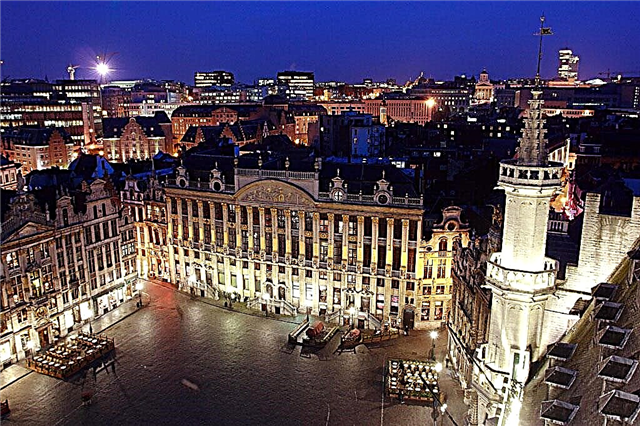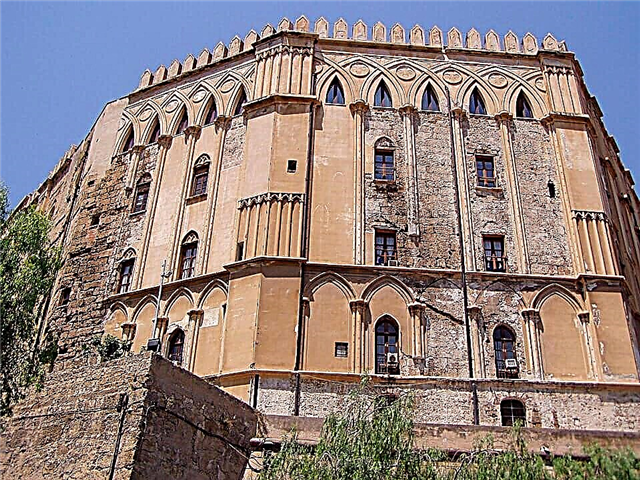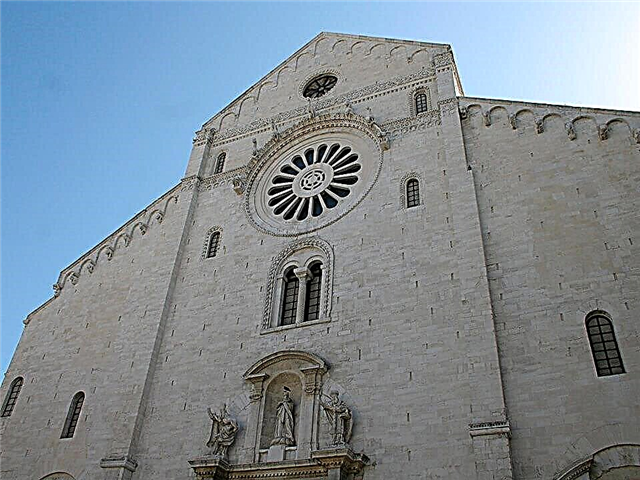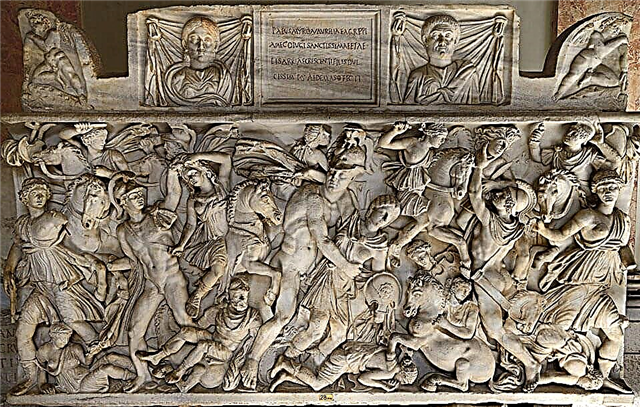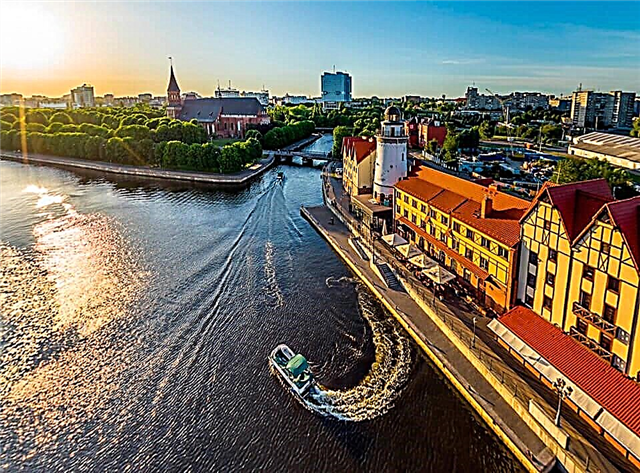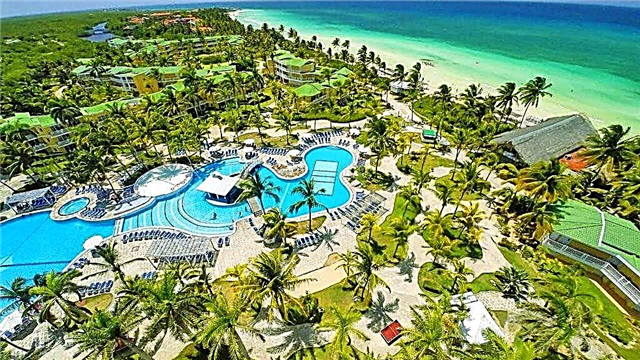Address: Russia, Moscow, South-Western Administrative District, Novoyasenevsky prospect, Bitsevsky park (Novoyasenevskaya metro station)
Main attractions: Main house, east wing, west wing, church of the apostles Peter and Paul
Coordinates: 55 ° 35'52.9 "N 37 ° 32'53.7" E
Content:
Yasenevo has been part of the Moscow line since the 60s of the last century. The old manor has an interesting history - since the XIV century it was a grand ducal and royal patrimony and passed by inheritance from the monarch to the monarch. Nowadays, the estate has been restored only partially, but acquaintance with it and walking near a beautiful baroque church will give many pleasant moments to lovers of Moscow antiquity.

The main gate of the estate
The history of Yasenevo - how it all began
Yasenevo belongs to the ancient estates. In the XIV century, these lands were owned by the Moscow prince John I Danilovich Kalita. For the first time, the village is mentioned in a spiritual charter compiled by Kalita in 1331. The khan summoned the Moscow prince to the Horde, and he was not sure that he would survive and would be able to return back. Therefore, Kalita drew up a will in advance and distributed the inheritance between relatives. He wrote the village of Yasenevo to his youngest son Andrey. However, the trip to the ruler of the Horde, contrary to expectations, was successful. The prince returned home safely and ruled for about 10 more years.
After his death, Yasenev was owned by the children and grandchildren of Kalita's youngest son, Andrei, who reigned in Serpukhov. They were brave warriors, took part in the Battle of Kulikovo and other military campaigns. At the end of the 15th century, Yasenevo was taken over by the Grand Duke John III. The village often changed owners, but the owners almost never lived in it. Therefore, until the 17th century, there was no manor house here.
The Yasenevo lands were located to the south of Moscow on the Teplostan Upland and were well warmed by the sun. It is known from historical documents that local residents grew a lot of strawberries, currants and other berries. But Yasenevo was especially famous for its magnificent orchards, in which apple and cherry trees grew.

The main house of the estate
In the 17th century, Prince Alexei Mikhailovich Lvov became the new owner of the estate. He built a new bell tower in the village and reconstructed a one-domed wooden church. Under Lvov, Yasenevo grew. The prince erected a two-story wooden house for himself, as well as a cattle and stables yard. The estate was surrounded by spacious arable lands, mows, heathlands and forest lands.
When in 1656 A.M. Lvov died, Tsar Alexei Mikhailovich returned Yasenevo to the royal treasury. He even wanted to equip one of his country residences in the village and built a new Church of the Sign. However, in connection with the death of the sovereign, these plans were not destined to come true.
In 1689, seventeen-year-old Peter I, at the insistence of his mother Natalya Kirillovna, married Evdokia, who was the daughter of Illarion Avraamovich Lopukhin, a solicitor at the royal court. As a gift, the young tsar wrote off the village of Yasenevo to his father-in-law, but made a significant reservation: if the male line of the Lopukhins is interrupted, return Yasenevo to the royal treasury.

View of the eastern facade of the main house
In the 18th century, Fyodor Avraamovich Lopukhin launched a large construction project on his lands. Instead of a wooden one, a stone manor house, built in the tradition of the late Baroque, appeared here. The next owner of the estate, Sergei Ivanovich Gagarin, continued the good traditions. He was known as a great lover of agriculture, so during his time a farm appeared on the estate, where fine-fleece sheep were bred. In addition, Gagarin was actively involved in the Yasenevo orchards, and their yield increased significantly.
History of the estate in the XIX-XX centuries
After S.I. Gagarin's estate was inherited by his daughter, Maria, who bore the surname Buturlin when she was married. By the end of the 19th century, about 700 people lived in the village adjacent to the estate. A large brick factory worked in it and there were two zemstvo schools. Since Yasenevo was located relatively far from Moscow, it did not develop as a suburban area.
The Buturlins owned the estate until the revolutionary events of 1917, and then the estate was nationalized. The artistic treasures that the owners of Yasenevo had been collecting for centuries have disappeared. It is believed that they were partially transferred to state museums, and some works of art were taken abroad. The fate of the large Yasenevo library turned out to be no less dramatic. As a result of the barbaric use, the books were simply destroyed.

View of the left wing
The main manor house stood empty with peeled wallpaper on the walls, and in 1924 it burned down. In the 1970s, the state found money, architects G.K. Ignatieva and L.A. Shitov prepared a project and the baroque building was restored on the old foundation. The restorers tried to give it the look that the house had in the 18th century.
Moscow expanded. In 1960, the territory of Yasenevo entered the city limits. After 14 years, mass development began around the estate. At that time, there were 151 courtyards in the village adjacent to the estate, in which more than 760 people lived. All residents were relocated to new buildings, and dilapidated rural houses were completely demolished. Several years passed, and the old estate was surrounded by typical high-rise buildings.
Yasenevsky temple
The church in honor of the apostles Peter and Paul appeared in the estate during the time of Fyodor Lopukhin, in the middle of the 18th century. It is built in the tradition of the late (Elizabethan) Baroque. The ancient temple is notable for the fact that in 1822 the wedding ceremony of Maria Nikolaevna Volkonskaya and Lieutenant Colonel Nikolai Ilyich Tolstoy, the parents of Leo Tolstoy, took place there.

Church of the Apostles Peter and Paul
In the 30s of the last century, this church was closed. At first, the premises of the temple were used as a warehouse, and then it stood in desolation. The wall paintings inside have not survived. Church services were resumed here in the late 1980s. Currently, the church has been restored and is a courtyard of the Vvedenskaya monastery of Optina Pustyn.
Yasenevo today
Today the area of the estate is 27.6 hectares. From three sides the city approaches the estate, and from the south-east of it there is a green massif of the Bitsevsky forest natural park.
The main house, two large outbuildings, stables and a parable house, built by the architect Ivan Fedorovich Michurin, have survived here since the 1830s. In the western part of the estate there are two ponds, which were marked on the Yasenevo plan back in 1766. These days they are neglected and heavily polluted. The regular linden park surrounding the manor buildings has survived only fragmentarily.

Pond on the territory of the estate
Unfortunately, most of the buildings of the old estate are in a deplorable state and require major restoration. In fact, only the Church of Peter and Paul has been restored and maintained.
How to get there
The estate can be reached on foot from the Novoyasenevskaya (Bitsevsky Park) Moscow metro station.

